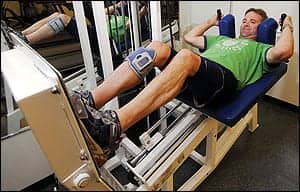A recently developed “smart” robotic harness featuring the ability to be fine-tuned may make it easier for patients to learn to walk again after experiencing a stroke or spinal cord injury.
Senior researcher Gregoire Courtine, a neuroscientist at the Swiss Federal Institute of Technology in Lausanne, Switzerland, explains in a media release from HealthDay that current robotic harnesses attached to the ceiling that support a patient on a treadmill apply an upward force that works against gravity, but also causes the patient’s body to shift backwards somewhat, which is destabilizing.
The “smart” robotic harness, however, is designed to balance the backward force with a precisely calculated forward force via an algorithm developed by the researchers that can do that for each patient.
The result, says Courtine in the release, is that the “smart” harness “re-establishes the natural interactions between the walking body and gravity.”
It is attached to the ceiling, and it allows patients to move forward, backward, and side-to-side to help patients find a more natural walking pattern as they progress through their rehabilitation.
A study published recently in Science Translational Medicine that included 26 patients recovering from spinal cord injury or stroke suggests that the technology looks promising.
The harness enabled patients to move with a more natural gait, and better balance and coordination. In addition, the spinal cord-injured patients saw immediate effects after 1 hour, with the ability to move more easily with their usual assist devices, such as crutches or a walker, according to the release.
Larger studies are planned to compare the “smart” harness with standard harnesses.
[Source: HealthDay, EurekAlert]





